Defining human mesenchymal and epithelial heterogeneity in response to oral inflammatory disease
- PMID: 33393902
- PMCID: PMC7781605
- DOI: 10.7554/eLife.62810
Defining human mesenchymal and epithelial heterogeneity in response to oral inflammatory disease
Abstract
Human oral soft tissues provide the first barrier of defence against chronic inflammatory disease and hold a remarkable scarless wounding phenotype. Tissue homeostasis requires coordinated actions of epithelial, mesenchymal, and immune cells. However, the extent of heterogeneity within the human oral mucosa and how tissue cell types are affected during the course of disease progression is unknown. Using single-cell transcriptome profiling we reveal a striking remodelling of the epithelial and mesenchymal niches with a decrease in functional populations that are linked to the aetiology of the disease. Analysis of ligand-receptor interaction pairs identify potential intercellular hubs driving the inflammatory component of the disease. Our work establishes a reference map of the human oral mucosa in health and disease, and a framework for the development of new therapeutic strategies.
Keywords: cell biology; gingiva; human; oral mucosa; periodontitis; regenerative medicine; stem cells; transcriptomics.
© 2021, Caetano et al.
Conflict of interest statement
AC, VY, AV, VB No competing interests declared, ED an employee of Unilever Plc. PS This work was funded by Unilever in the form of a research grant awarded to P.T.S
Figures



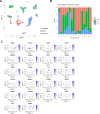
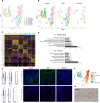
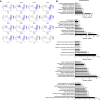

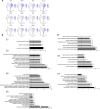
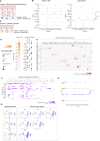

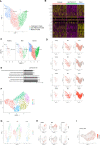
References
-
- Abe T, AlSarhan M, Benakanakere MR, Maekawa T, Kinane DF, Cancro MP, Korostoff JM, Hajishengallis G. The B Cell-Stimulatory cytokines BLyS and APRIL are elevated in human periodontitis and are required for B Cell-Dependent bone loss in experimental murine periodontitis. The Journal of Immunology. 2015;195:1427–1435. doi: 10.4049/jimmunol.1500496. - DOI - PMC - PubMed
-
- Artese L, Simon MJ, Piattelli A, Ferrari DS, Cardoso LA, Faveri M, Onuma T, Piccirilli M, Perrotti V, Shibli JA. Immunohistochemical analysis of inflammatory infiltrate in aggressive and chronic periodontitis: a comparative study. Clinical Oral Investigations. 2011;15:233–240. doi: 10.1007/s00784-009-0374-1. - DOI - PubMed
Publication types
MeSH terms
Associated data
- Actions
Grants and funding
LinkOut - more resources
Full Text Sources
Other Literature Sources
Medical
Molecular Biology Databases

